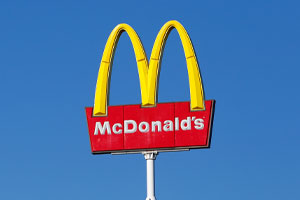
Just when it seemed things were returning to normal, some habits changed for the worse. The instability of COVID times took countless people out of contact with the outside world. Things became more informal, faster and less social.
One area of change was the fast-food franchises. People embraced no-touch food service during COVID. Now, the instant-meal world is working hard to keep up the momentum by making fast food faster and less social. The idea is to minimalize personal contact and maximize profits.
The practice of fast dining will accelerate as establishments consider locations with no tables or chairs. They encourage customers to order online and pick up the food, often delivered by robotic arms and conveyor belts. Everything is wired to make quick takeout, the new way of going out.
The giant fast-food chains are betting that customers will keep taking out. Indeed, 85 percent of all orders at fast food franchises in 2022 were taken to go. That pre-COVID total was 76 percent.
Giant Vending Machines
For example, a new McDonald’s in Fort Worth, Texas, has opened with no dining area or bathrooms. There is just automated pickup—no personal contact needed. The new concept represents savings in building costs, maintenance and staff.
Other chains like Taco Bell are expanding to as many as four drive-through lanes to meet growing demand. Yet others are only taking digital orders at much-reduced premises.
Help Remove Jesus Bath Mat on Amazon
The new trend even includes chains with casual sit-down dining facilities where 33 percent of orders were now taken off-premises. Starbucks, known for its European café style atmosphere that favors social gatherings, is now giving way to bare basics. Over the next three years, nearly 400 new U.S. stores will be added with only pickup or delivery services.
Those observing the market are taking a risk that the pandemic patterns will hold. The rush to mechanize also comes at the expense of sacrificing the sense of hospitality that some chains value. The new restaurants feel so cold and uninviting. Some customers have likened them to giant vending machines.
A Takeout Revolution
The Wall Street Journal calls the new trend a “takeout revolution [that] is just beginning.” The idea is to speed up orders and avoid congestion. Some chains will be spending hundreds of millions of dollars renovating stores to get things done faster. Most new restaurants will place special emphasis on takeout and ordering online. The future is no personal service or dining.
When first introduced in the fifties and sixties, fast food already represented a revolution in food preparation. The concept took the mechanization and industrial processes sweeping the country and applied them to food. Suddenly, new chains sprung up that reduced the fine art of cooking into simple procedures to deliver identical results. The inside dining areas were likewise modified to facilitate quick eating and informality. Later drive-through windows would speed up the process yet more.
What Was Lost
In making fast food, something fundamental was lost. The new food items may well satisfy the body’s needs, but they lack spiritual qualities that nourish the soul and are an important part of dining. The need to package food efficiently took away the practice of presenting food in a beautiful way. The mass scale of production made variety and innovation challenging. The identical process of preparation took away the need for cooking skills. Gone were the inviting dining atmospheres that were so much a part of the social act of eating.
Satanic Christ Porn-blasphemy at Walmart — Sign Petition
The new revolution in takeout will speed up fast food and make it yet more mechanistic and impersonal. When people are inserted at the end of the food processes, they become standardized and mechanized. The meaning of a meal as a means to communicate and enjoy life together with others is lost when restaurants become vending machines.
“Traditional” McDonald’s
The present takeout places still have some elements of traditional dining. Many still let the customer talk to the cashier—others insist upon electronic menus. They still have tables and chairs and can still offer some service. There is still the excitement of eating in a room with others.
The new revolution of digital takeout will eliminate all this. Preliminary tests of these recent changes have shown that not everyone is on board. Some are still attached to the bare minimum of limited personal contact, minimal service and sitting down to eat. Some customers even refer to a regular McDonald’s as “traditional.” They want to keep what little is left of the service and warmth of the people around them. They find the “traditional” McDonald’s reassuring in a fast-paced world.
Not all food is fast food, but the acceleration of takeout does not bode well for a society in need of occasions to slow down, reflect and communicate.
Photo Credit: © Roland Magnusson – stock.adobe.com


